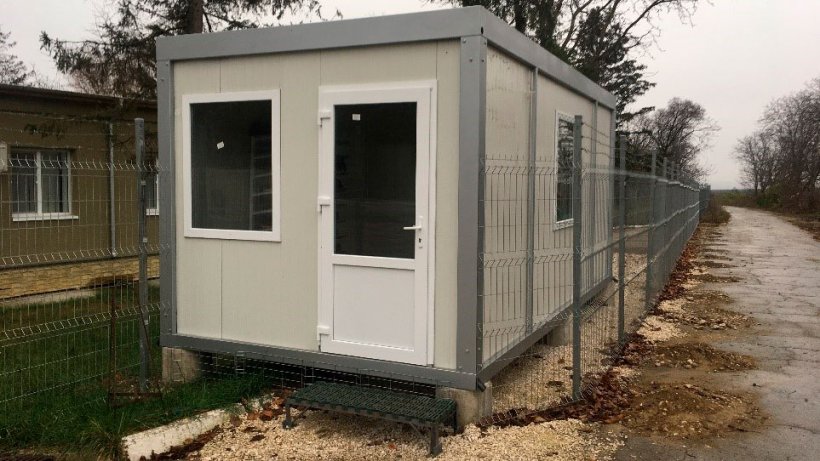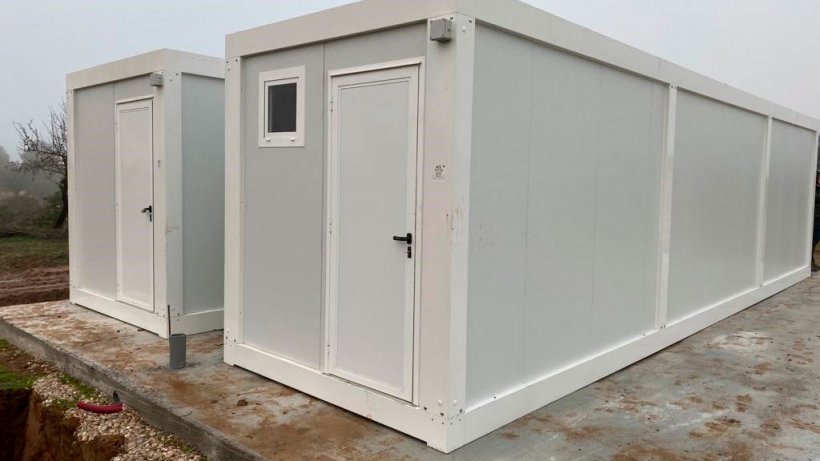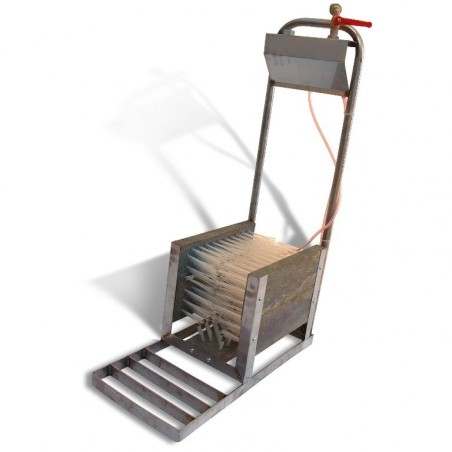The most important goal of farm biosecurity is to have a clear and efficient set of segregation strategies for bioexclusion. The first line of external biosecurity in most of our farms is created by an external fence and gates. This fence should be continuous and define the farm property or controlled access zone (CAZ). The transition from the area outside of the farm into the CAZ is through a controlled access point (i.e. gate). Many farms do not have a clear protocol of how to complete that transition (e.g. plastic booties, change of footwear, vehicle parking). In many cases, they don’t even recognize that it is an important consideration and make no effort to manage the biosecurity of this area.

Picture 2: Example of a prefabricated room at the entrance of a farm (photo courtesy of PJ Corns).

However, in order to minimize the risk of CAZ contamination, some producers have created an official personnel entry point using prefabricated rooms (Picture 2). In some cases, old shipping containers have been transformed and adapted for this purpose (Picture 3). These rooms provide a clear separation between zones by using a Danish-style bench entry. They provide a warm environment, sometimes through the use of radiant floor heat, that helps to ensure that the floor and other surfaces are kept dry at all times. In most cases, they also provide a hand washing station. Ultimately, they serve to decrease the chance of cross-contamination into the farm by increasing segregation.

Picture 3. Example of shipping containers at a sea port.






